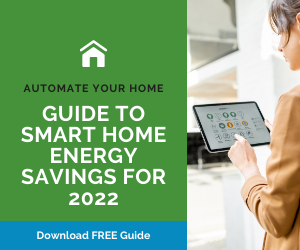It is getting easier to build an energy-efficient house thanks to new technologies that continue to improve. Construction practices and building methods have been streamlined to incorporate an energy efficient house design more easily into a builder’s plans. What are some of the elements of an energy-efficient house? Read on.
Secure Building Envelope
A “building envelope” is essentially everything surrounding the house on the outside that serves as protection for the inside of your home. An energy-efficient house design will have a thermal building envelope that is tightly sealed. Specific elements to the thermal envelope include the walls, roof, insulation, windows, weatherstripping, and caulking.
Insulation
An energy-efficient house will have an R-value (rate of heat loss per hour per square foot per inch of material thickness) much higher than required by most building codes. The lower R-value, the faster the heat loss. All empty spaces that are to remain empty should be completely filled with insulation.
Treated Windows
By choosing double-paned windows made with a Low-E (low emissivity) coating (silver oxide film) located in between the double panes of glass that will reject heat from the sun, propelling it back to where it came from, your windows can be more energy efficient. It also works in a reverse way for winter months, helping to give your home warmer winters and cooler summers, all the while promoting an energy-efficient house design as well.
Energy-efficient Lighting and Energy Star Appliances
By utilizing LED lighting technology instead of incandescent light bulbs, energy consumption in the home can be reduced by anywhere from 50 to 75 percent. Energy Star appliances, such as refrigerators, washers, and dryers, are designed to use less energy to operate, thereby helping the environment and saving you money at the same time.
Energy-efficient Water Heaters
When planning your energy efficient house design, consider opting for a tankless water heater or a model with high efficiency. Also consider PEX piping, which can offer a number of benefits, including greater water pressure, lower cost of materials, flexibility in planning, easier installation, and it is non-corrodible.
Seal Ducts to Prevent Leakage
An average home duct system can leak 30 percent or more. To prevent leakage and to have greater energy efficiency in your home, a good home builder will ensure the ducts in your home are properly sealed.
Air/Vapor Retarders
Condensation from water vapor can be a significant threat to a home, especially homes in warmer climates, such as South Florida’s tropical climate. As humid outdoor air enters the walls of a home and encounters cooler spaces, it condenses into liquid water.
Some building structures in humid and tropical climates can have issues with rotten wood or mold if these issues are not considered when the home is being built. An air or vapor retarder will inhibit the movement of air or water vapors into the home.
Know More About Energy Efficient House Design
You can trust Synergy Homes to seek out responsible, environmentally friendly solutions that will fit your needs. Knowledgeable representatives can answer any questions you may have about these features and more. Synergy Homes is committed to using the latest technology to bring the most energy efficient house design to you and your family. Call 1-516-617-8671 to learn more today.

Comments are closed here.